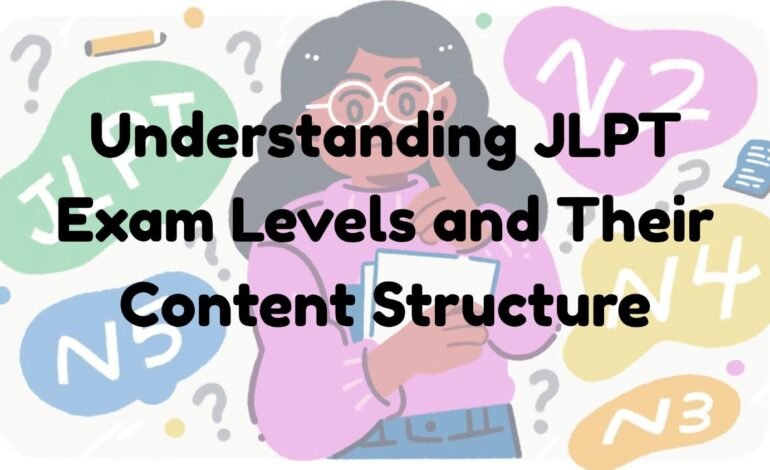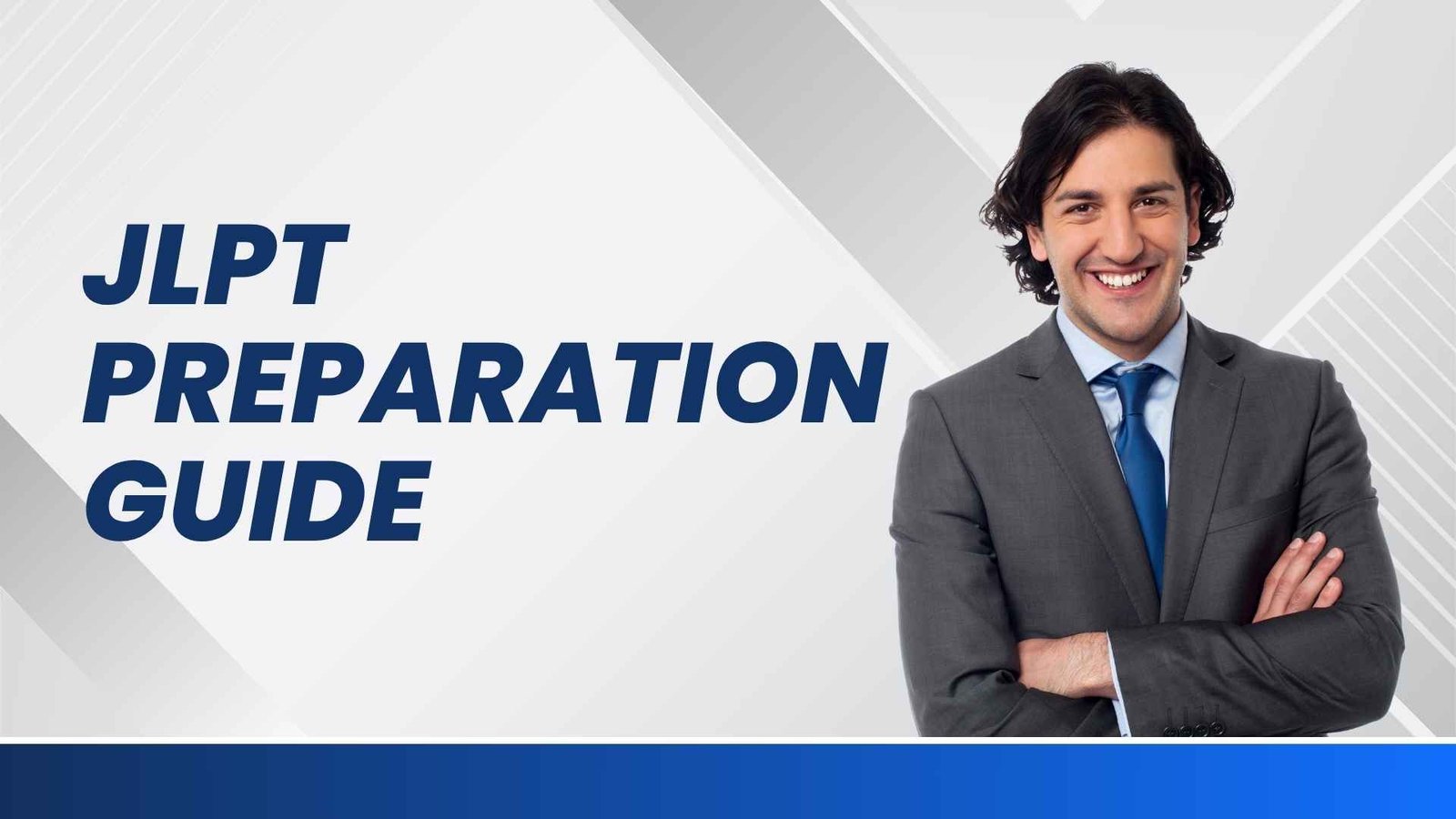
How to Prepare for the JLPT: Tips for Every Level.
The Japanese Language Proficiency Test (JLPT) is a globally recognized certification for non-native Japanese speakers. Whether you’re aiming for JLPT N5 as a beginner or targeting the advanced JLPT N1, it is important to prepare for JLPT strategically to ensure success.
In this complete guide, we’ll show you how to prepare for the JLPT across all levels — from N5 to N1. You’ll learn about the best study materials, effective study schedules, vocabulary acquisition strategies, and top online resources to streamline your preparation and boost your confidence. Visit this official website.
Understanding the JLPT: Levels and Structure
The JLPT (Japanese-Language Proficiency Test) is divided into five levels: N1 to N5. N5 is the easiest, while N1 is the most advanced. Each level tests three core areas: Language Knowledge (Vocabulary/Grammar), Reading, and Listening.

The exam becomes progressively more difficult, with higher levels requiring deeper understanding of complex texts and conversations. It’s designed to evaluate practical Japanese skills used in daily life and work.
The JLPT consists of five levels:
- N5: Beginner
- N4: Upper Beginner
- N3: Intermediate
- N2: Upper Intermediate
- N1: Advanced/Fluent
Each level tests Vocabulary (Moji-Goi), Grammar and Reading (Bunpō & Dokkai), and Listening (Chokai). The difficulty increases progressively, with N1 requiring a near-native grasp of the language.
Best Study Materials for Japanese-Language Proficiency Test (JLPT) – Level-Wise Breakdown
Choosing the right resources is critical for success. Here’s a level-wise breakdown of recommended materials:

JLPT N5 & N4 (Beginner–Upper Beginner)
- Textbooks: Genki I & II, Minna no Nihongo I
- Vocabulary: JLPT N5 Tango, StickyStudy App
- Grammar: Japanese Sentence Patterns for Effective Communication
- Kanji Practice: Basic Kanji Book Vol. 1
These materials cover foundational grammar, vocabulary, and basic kanji needed to pass N5 and N4. Start with kana (hiragana & katakana) before moving to structured lessons.
JLPT N3 (Intermediate)
- Textbooks: Sou Matome N3 Series, Try! JLPT N3
- Listening: NHK Easy News, JLPT Sensei Audio Practice
- Reading: Read Real Japanese, Graded Readers
N3 is the bridge level, demanding better reading and listening skills. Sou Matome’s structured daily lessons are especially useful.
JLPT N2 & N1 (Upper Intermediate to Advanced)
- Books: Shin Kanzen Master Series, Nihongo So-Matome N2/N1
- Reading Practice: NHK News Web Easy, Mainichi Shimbun Articles
- Apps: Anki (with shared JLPT N2/N1 decks), Satori Reader
These levels require mastering thousands of vocabulary terms, complex grammar patterns, and nuanced reading/listening comprehension.
Pro Tip: Use official JLPT workbooks and mock tests by JEES for all levels. They’re closest to the real exam format.
Effective Study Plans and Daily Schedules
Consistency is the key to success in JLPT preparation. Here’s how to structure your study time effectively:
Daily Study Plan (2–3 hours/day)
- Morning (30 min): Vocabulary review (Anki or flashcards
- Afternoon (45 min): Grammar and reading practice
- Evening (30 min): Listening practice with native audio
Weekly Strategy
- 2 Days: Full-length mock exam
- 3–4 Days: Grammar & vocabulary-focused sessions
- Weekends: Review errors, revise weak topics, and shadow audio content
If you’re a beginner wondering how to prepare for the JLPT for the first time, start by learning hiragana and katakana, then focus on daily-use vocabulary and basic grammar.
Tips for Vocabulary and Language Acquisition
1. Use Spaced Repetition Systems (SRS)
Apps like Anki use SRS to ensure you retain vocabulary over time. Download JLPT-specific decks for each level.
2. Learn Vocabulary in Context
Instead of memorising isolated words, study them through full sentences or short passages. This enhances retention and comprehension.
3. Shadowing Technique
Shadowing involves mimicking native Japanese audio immediately after hearing it. It improves pronunciation, rhythm, and listening comprehension. Start with short dialogues from Genki or audio from JapanesePod101.
4. Focus on JLPT-Specific Word Lists
Use lists designed for your target level — such as JLPT N5 800 words or N2 6,000 words. Prioritise based on JLPT frequency.
Practice Tests and Mock Exams
Taking regular mock exams under timed conditions is a must. They help:
- Simulate the real exam environment
- Identify weak areas
- Improve time management
Where to Find Practice Tests:
- JLPT Official Website: Free practice workbook PDFs
- JLPT Sensei: Online practice quizzes, grammar lists, and test simulations
- YouTube Channels:
- Nihongo no Mori – In-depth grammar and test prep
- Learn Japanese with Tanaka-san – Great for beginners
Repeat tests every 2–3 weeks to monitor your progress and adjust your study plan accordingly.
Top Online Tools & Resources for JLPT Preparation
Websites and Platforms
- WaniKani: Great for kanji memorization through radicals and mnemonics
- BunPro: An SRS-powered grammar tool aligned with JLPT levels
- JLPT Sensei: Free vocabulary, grammar, kanji lists, and practice quizzes
- Tofugu: Articles and guides on Japanese learning with downloadable content
Reddit Communities
- r/LearnJapanese: Ask questions, find peer-reviewed study resources, and follow JLPT-specific threads
Perfect if you’re searching “how to prepare for the JLPT reddit” or want real learner experiences.
Mobile Apps
- Anki: Essential for long-term vocab memorization
- LingoDeer: Gamified grammar and sentence practice
- Imiwa? (iOS) / Takoboto (Android): Offline Japanese-English dictionaries with JLPT tagging
- JLPT Vocabulary N5–N1 (GreenLife): Flashcard app by JLPT level
How to Prepare for JLPT N5 (Beginner Focus)
For beginners, the main focus should be on:
- Mastering 800–1000 basic vocabulary words
- Learning 100–150 kanji
- Understanding basic grammar structures like です, ます, particles (は, が, を)
Use resources like Genki I, JLPT Tango N5, and Minna no Nihongo I. Supplement with YouTube channels and beginner-friendly listening resources.
A 3–6 month daily study plan with 1–2 hours per day is usually enough for beginners to clear N5.
Conclusion: Your JLPT Success Blueprint
Whether you’re just starting out or aiming for the top level of the JLPT, your success depends on:
- Choosing the right materials
- Following a consistent and realistic study plan
- Using technology and community to stay motivated
- Practising regularly with mock tests
JLPT preparation isn’t just about hard work — it’s about smart learning strategies and continuous practice. Make a plan, stay committed, and track your progress. With the right approach, passing the JLPT is entirely within your reach.
If you’re planning to take the JLPT, it’s important to understand the JLPT exam registration process to ensure you don’t miss any deadlines.
FAQs – JLPT Preparation
1. How should beginners start preparing for the JLPT?
Start with hiragana and katakana, then focus on basic grammar and vocabulary. Use beginner textbooks like Genki or Minna no Nihongo.
2. Are there downloadable PDFs to help prepare for JLPT?
Yes. Official JLPT websites and platforms like JLPT Sensei and Tofugu offer free downloadable PDFs for practice.
3. Is Reddit a good place to get JLPT advice?
Absolutely. Subreddits like r/LearnJapanese are great for getting personal tips, study plans, and resource recommendations.
4. How much time is needed to prepare for JLPT N5?
On average, 3–6 months of daily study (1–2 hours) is enough for beginners to prepare well.
5. Can I self-study for JLPT N5?
Yes! With the right books, apps like Anki, and consistent effort, self-studying for N5 is completely doable.





